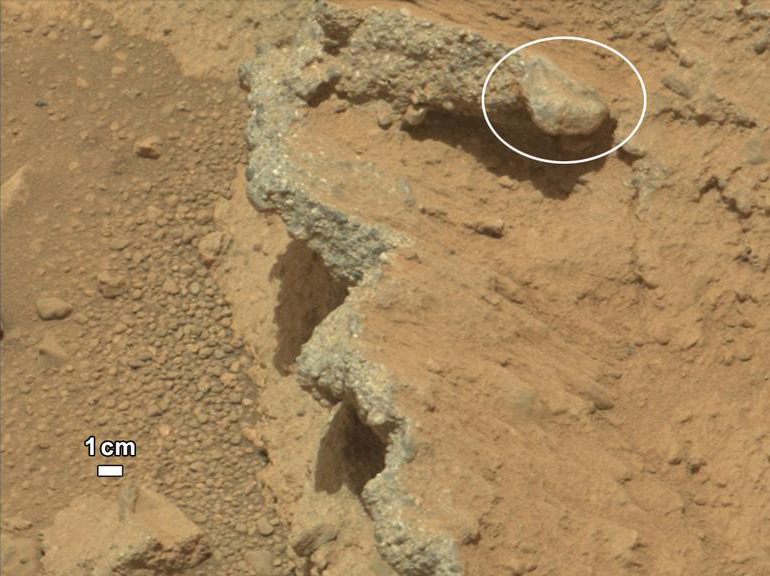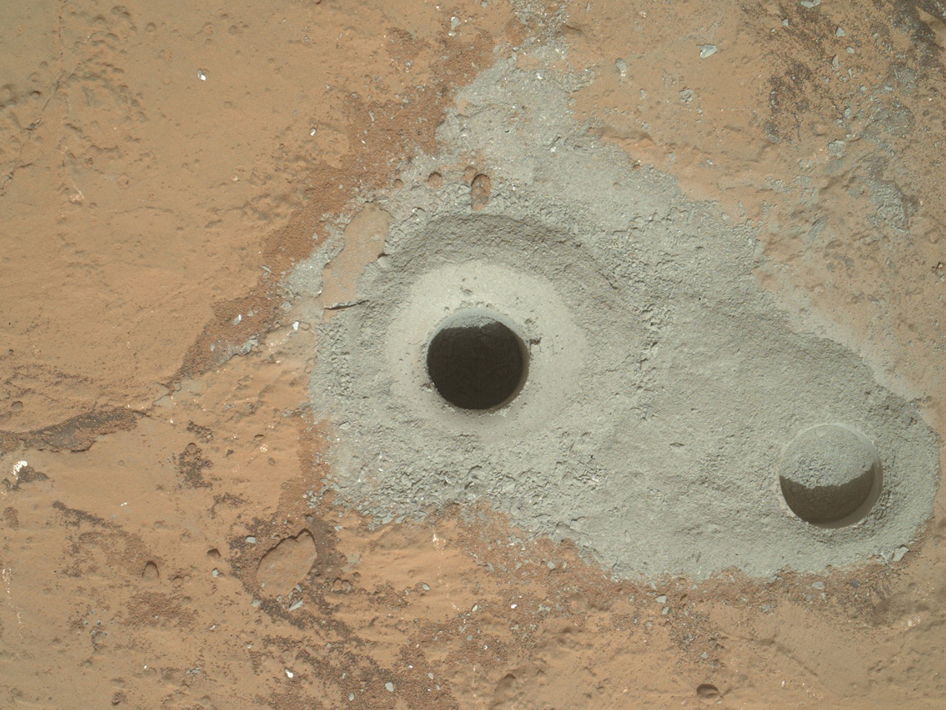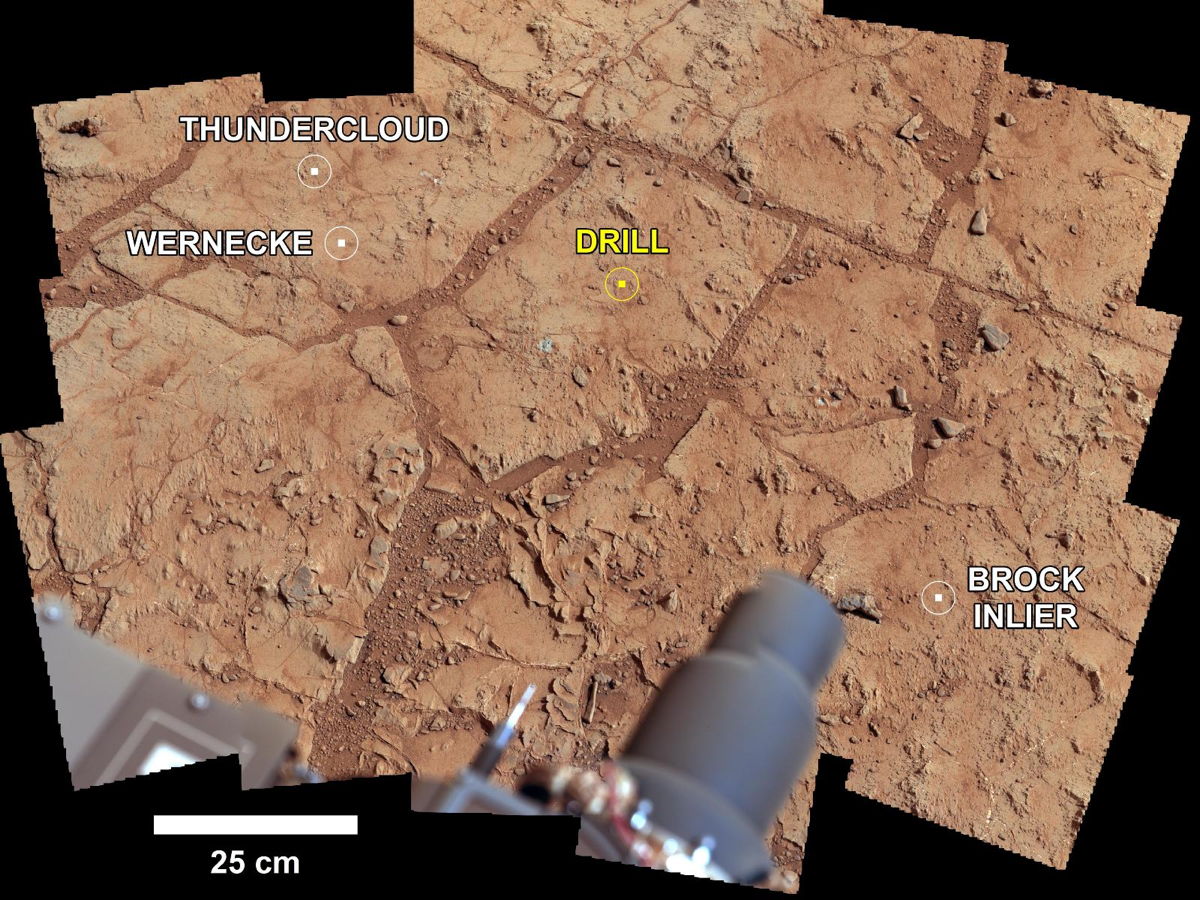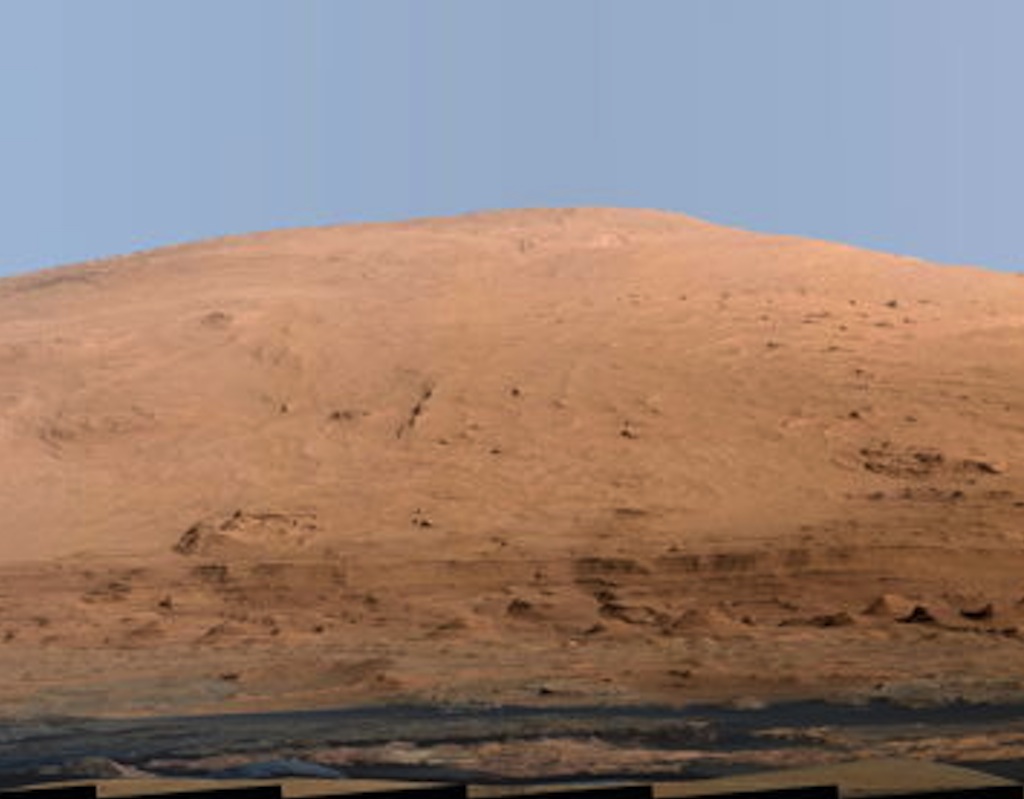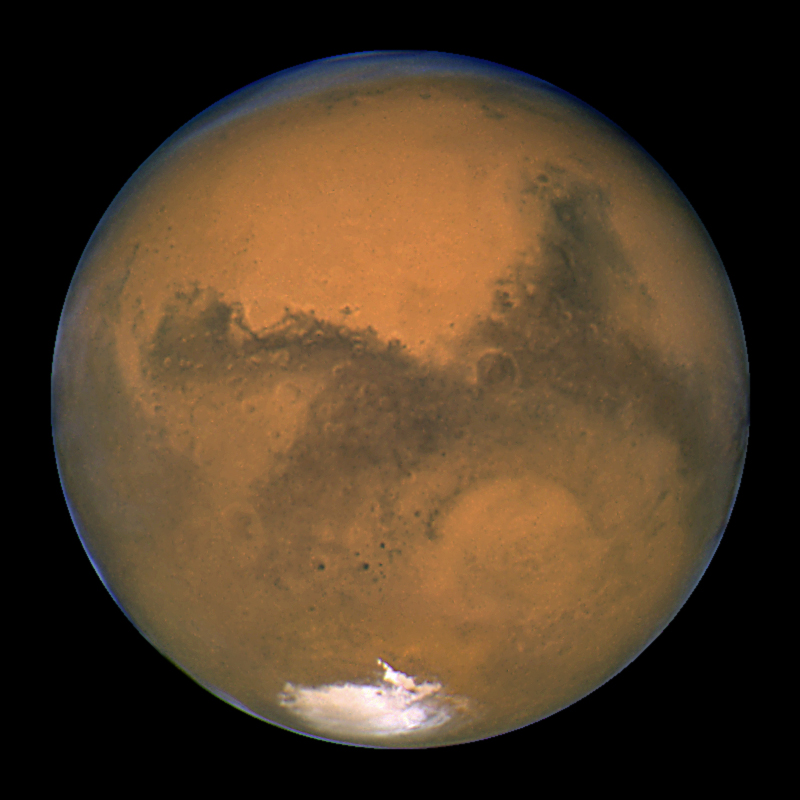Mars Rover Curiosity's 7 Biggest Discoveries (So Far)
Roving on Mars
NASA's Mars rover Curiosity has been exploring the Red Planet just since last August, but the robot has already racked up quite a string of accomplishments.
For example, the 1-ton rover has already checked off its primary mission goal, determining that its Gale Crater landing site could have supported microbial life in the ancient past.
Here's a brief rundown of Curiosity's biggest achievements, a list that will surely grow as the car-size robot gets deeper into its planned two-year surface mission on the Red Planet.
FIRST STOP: Sticking the Landing
Sticking the Landing
Curiosity's touchdown on the night of Aug. 5 was a big deal, both for the rover's mission and the future of Mars exploration.
In a maneuver that had never been tried before on another planet, a rocket-powered sky crane lowered Curiosity to the Martian surface on cables, then flew off and crash-landed intentionally a safe distance away. NASA officials say this technique should help land other big payloads in the future, helping pave the way for human outposts on the Red Planet.
Curiosity also landed with unprecedented precision, thanks to a new guided entry system that will aid future missions as well. The rover touched down within a target ellipse that measured just 12 miles long by 4 miles wide (20 by 7 kilometers) — a huge improvement from the 2004 landing of NASA's twin Spirit and Opportunity rovers, whose ellipses spanned 93 miles by 12 miles (150 by 20 km).
NEXT: Red Planet Radiation
Measuring Red Planet Radiation
Curiosity has been assessing the Martian radiation environment, helping scientists better understand the hazards radiation may pose both to potential indigenous microbes and human visitors to the Red Planet.
The news so far is encouraging, at least on the colonization front. Curiosity's measurements — the first of their kind ever taken on the surface of another planet — suggest that Martian radiation levels are comparable to those experienced by astronauts aboard the International Space Station.
Curiosity observed substantially higher radiation levels during its eight-month cruise through deep space. But overall, rover scientists say, the early numbers suggest that astronauts could endure a long-term, roundtrip Mars mission without accumulating a worryingly high dose (though a few big Mars-directed solar eruptions could complicate things considerably).
NEXT: Ancient Mars Stream
Finding an Ancient Streambed
Just seven weeks after Curiosity touched down, mission scientists announced that the rover had found an ancient streambed where water once flowed roughly knee-deep for thousands of years at a time.
The discovery suggests that at least some parts of Mars may have been habitable billions of years ago, since life here on Earth thrives pretty much anywhere liquid water is found.
Breaking space news, the latest updates on rocket launches, skywatching events and more!
NEXT: Mars Rock Drilling
Drilling into a Martian Rock
In February, Curiosity used its hammering drill to bore 2.5 inches (6.4 centimeters) into a Red Planet outcrop called "John Klein," marking the first time any rover had ever drilled into a rock to collect samples on another world.
Going so deep beneath the Martian surface allowed Curiosity to study the Martian environment as it existed billions of years ago, leading to perhaps the rover's biggest scientific discovery to date (see next item).
NEXT: A Habitable Mars
A Habitable Environment
Curiosity spotted some of the key chemical ingredients for life in the gray powder it drilled out of the John Klein rock, including sulfur, nitrogen, hydrogen, oxygen, phosphorus and carbon. The fine-grained rock also contains clay minerals, suggesting a long-ago aqueous environment — perhaps a lake — that was neutral in pH and not too salty, researchers said.
With this evidence in hand, the Curiosity team announced in early March that the rover's landing site could have supported microbial life billions of years ago.
"We have found a habitable environment that is so benign and supportive of life that probably — if this water was around and you had been on the planet, you would have been able to drink it," Curiosity chief scientist John Grotzinger, of Caltech in Pasadena, said at the time.
NEXT: Martian Social Media Star
Engaging the Public
Curiosity has helped bring planetary science to the masses, inspiring a tremendous level of interest in Mars exploration.
Some of the intrigue was doubtless generated by Curiosity's daring landing strategy, which seemed to be pulled from the pages of a sci-fi novel. Indeed, crowds gathered in places such as New York's Times Square on the night of Aug. 5 to see if Curiosity would survive its harrowing "seven minutes of terror" plunge through the Martian atmosphere.
But the interest has remained strong in the months after the rover's touchdown, thanks in part to Curiosity's strong social media and Internet presence.
As of late March, the robot's official Twitter feed has more than 1.3 million followers, and Curiosity has posted more than 1,900 tweets. The rover has also returned to Earth more than 49,000 images, which are viewable by the public at Curiosity's mission page.
NEXT: Planetary Science Maven
Helping Save NASA Planetary Science?
NASA's planetary science program suffered a 20 percent cut in the White House's proposed 2013 federal budget, compelling the space agency to scale back its robotic exploration efforts and drop out of two future European-led Mars missions.
But NASA officials and many researchers have expressed hope that Curiosity's mission could help swing the pendulum back the other way, giving planetary science a boost in tough fiscal times.
"What a tremendous opportunity it is for us," NASA planetary science chief Jim Green said last March, while the rover was en route to the Red Planet. "I believe [Curiosity] will open up that new era of discovery that will compel this nation to invest more in planetary science."
The White House has yet to officially restore any lost planetary science funding, but Curiosity's success has already had an impact on the future of NASA's Mars program. This past December, the agency announced that it plans to launch another big rover to Mars in 2020 — one that will be based on Curiosity's chassis and landing system.

Michael Wall is a Senior Space Writer with Space.com and joined the team in 2010. He primarily covers exoplanets, spaceflight and military space, but has been known to dabble in the space art beat. His book about the search for alien life, "Out There," was published on Nov. 13, 2018. Before becoming a science writer, Michael worked as a herpetologist and wildlife biologist. He has a Ph.D. in evolutionary biology from the University of Sydney, Australia, a bachelor's degree from the University of Arizona, and a graduate certificate in science writing from the University of California, Santa Cruz. To find out what his latest project is, you can follow Michael on Twitter.



